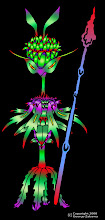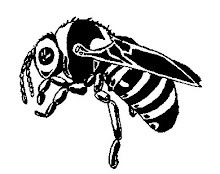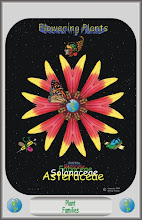Subscribe to:
Post Comments (Atom)
skip to main |
skip to sidebar


Homo sneakeaus

by Christopher Zabawa


Me and the Missus
by Christopher Zabawa

Food-Clothing-Medicine-Shelter
Click on link below to browse by wildflower category, color, family or search, or click on the common wildflower name to view individual species, photos and text, at the Wonderful World of Oklahoma Wildflowers site.
http://www.oklahomawildflowers.110mb.com/.
Oklahoma Wildflowers serves as an introduction to The Wonderful World of Oklahoma Wildflowers site which contains photos and information about wild flowers.


Homo sneakeaus
Welcome All
About this blog
Oklahoma Wildflowers serves as an introduction to The Wonderful World of Oklahoma Wildflowers with a linked list to the site which which has general plant information and images useful for identification and educational purposes.
Since space is limited here I will add photos and information about plants blooming during the current month. For more detailed information and images go to the linked address. Unless noted, all photos were taken in Oklahoma
For detailed information on using the Wonderful World of Oklahoma Wildflowers scroll to the end of this page or click on a flower common name on the list.
The Holding tank
The Holding tank contains more photos and basic species information not yet on Oklahoma Wildflower blog.
Click here for more information
Click here for more information
The Holding Tank Topics
Copyright Information All images, artwork and text, on this blog, Oklahoma Wildflowers, are copyrighted and may not be used without permission of the author.
The Bee

by Christopher Zabawa
Wildflower Links
Labels
- A Wildflower Christmas Tree
- American Lopseed (Phryma leptostachya)
- Aromatic Aster (Aster oblongifolius) with Pyrausta tyralus
- Asparagus Wild or Garden (Asparagus officinalis)
- Bastard Toadflax (Comandra umbellate)
- Beaked Cornsalad (Valerianella radiate)
- Black-eyed Susan(Rudbeckia hirta)
- Blue Eyed Grass (Sisyrinchium campestre)
- Caffeineinsis Zabawaiia)
- Camphor Weed (Pluchea camphorate)
- Canada Goldenrod (Solidago canadensis L.)
- Canada Lettuce(Lactuca canadensis)
- Christmas Flower Stocking 2009
- Christmas Wildflower Wreath 2008
- Clammyweed (Polanisia dodecandra) 2009
- Common Dandelion (Taraxacum officinale) 2009
- Common Dandelion with Green Lynx Spider
- Common St. Johns Wort(Hypericum perforatum)
- Corn Speedwell (Veronica arvensis)
- Cursed Crowfoot (Ranunculus sceleratus)
- Cutleaf Evening Primrose (Oenothera laciniata)
- Downy Indian Paintbrush (Castilleja purpurea)
- Earth Day 2009
- Eastern Poison Ivy (Toxicodendron radicans)
- Fall 2009 update
- False Daisy (Eclipta prostrata)
- False Garlic (Nothoscordum bivalve)
- Field Pansy (Viola Bicolor)
- Field Pansy (Viola Bicolor) 2009
- Flowering Spurge (Euphorbia corollata)
- Fringed Puccoon 2009 (Lithospermum incisum)
- Goat's Rue (Tephrosia virginiana)
- Goatsbeard (Tragopogon dubius)
- Gray Field Speedwell (Veronica polita)
- Gray Field Speedwell (Veronica polita) 2009
- Green Carpetweed (Mollugo verticillata)
- Hairy Bittercress (Cardamine hirsuta)
- Hairyfruit Chervil (Chaerophyllum tainturieri)
- Halloween 2009
- Happy Face
- Happy Fallday
- Helios captares
- Henbit (Lamium amplexicaule)
- Henbit Red (Lamium purpureum)
- Homo sneakeaus
- Indian Blanket (Gaillardia pulchella)
- Indian Paintbrush (Casilleja indivisa)
- Indian Paintbrush (Castilleja indivisa)
- Indigo Bush (Amorpha fruticosa)
- Lanceleaf Blanketflower (Gaillardia aestivalis)
- Large Flowered Gaura (Gaura longiflora)
- Least Bluet (Hedyotis crassifolia)
- Leavenworth's Eryngo (Eryngium leavenworthii)
- Longbract Wild Indigo (Baptisia bracteata)
- Maximilian's Sunflower (Helianthus maximilianii)
- Mayapple (Podophyllum peltatum)
- Middle of Summer Bloom
- Moth Mullein (Verbascum blattaria)
- Movie: Clearwing Hummingbird Moth
- Movie: Fireworks 4th of July
- Movie: The Great Bee Chase
- Movie: Yellow Puff
- Pale Smartweed (Polygonum lapathifolium)
- Partridge Pea (Chamaechrista fasciculate)
- Pink Milkwort (Polygala incarnata)
- Prickly Pear Cactus (Opuntia humifusa)
- Purple Locoweed (Oxytropis lambertii)
- Red Bud (Cercis canadensis)
- Scaly Blazing Star (Liatris squarrosa) 2009
- Scrambled Eggs ( Corydalis micrantha)
- Shaggy Dwarf Morning-glory (Evolvulus nuttallianus)
- Shepards Purse (Capsella bursa-pastoris)
- Slender Ladys Tresses (Spiranthes lacera)
- Spring Beauty (Claytonia virginica)
- Spring Beauty (Claytonia virginica) 2009
- Spring flowers 2009
- Sunbright (Phemeranthus parviflorus)
- Tall Thistle (Cirsium altissimo) and Clearwing Hummingbird Moth
- Tall Thistle (Cirsium altissimum)
- Texas Stitchwort (Minuartia michauxii var. texana)
- The Holding Tank
- Thymeleaf Sandwort (Arenaria serpyllifolia)
- Valley Redstem (Ammannia coccinea)
- Venus Looking Glass (Triodanis perfoliata)
- Virginia Strawberry (Fragaria virginiana)
- Wanta moreius
- Water Speedwell(Veronica anagallis-aquatica)
- Western Tansymustard (Descurainia pinnata)
- White Snakeroot (Ageratina altissima)
- Wild four O Clocks (Mirabilis nyctaginea)
- Wild Sweer Potato(Ipomoea pandurata)
- Wood Sorrel
- Yarrrow (Achillea millefolium)
- Yellow Puff (Neptunia lutea)
Browse by Plant Category (Color, Family)
Browse by Plant Families
- Acanthus (Acanthaceae)
- Agave (Agavaceae)
- Amaranth (Amaranthaceae)
- Aster (Asteraceae)
- Borage (Boraginaceae)
- Buckwheat (Polygonaceae)
- Buttercup (Ranunculaceae)
- Cactus (Cactaceae)
- Caper (Capparaceae)
- Carnation (Caryophyllaceae)
- Dayflower (Commelinaceae)
- Figwort (Scrophulariaceae)
- Flax (Linaceae)
- Fumewort (Fumariaceae)
- Gentian (Gentianaceae)
- Geranium (Geraniaceae)
- Iris (Iridaceae)
- Lily (Liliaceae)
- Madder (Rubiaceae)
- Mallow (Malvaceae)
- Milkweed (Asclepiadaceae)
- Milkwort (Polygalaceae)
- Mint (Lamiaceae)
- Morning_glory (Convolvulaceae)
- Mustard (Brassicaceae)
- Nightshade (Solanaceae)
- Parsley (Apiaceae)
- Pea (Fabaceae)
- Phlox (Polemoniaceae)
- Primrose (Onagraceae)
- Purslane (Portulacaceae)
- Rose (Rosaceae)
- Spiderwort (Commelinaceae)
- Spurge (Euphorbiaceae)
- Vervain (Verbenaceae)
- Violet (Violaceae)
- Wood Sorrel (Oxalidaceae)
Septober's Flowers
SEPTOBER'S FLOWERS
Due to a lengthy illness in September there was no September flower of the Month. Since most plants blooming in late summer bloom into fall, such as the Sunflowers, September will be combined with October and the new month will be known as Septober.
The month of September has brought cooler temperatures to the state and little rainfall to central Oklahoma. Fall is here and the leaves are falling. However the month of September brings with it the towering, brightly colored Sunflowers which are continuing from August as well as beautiful Asters and other late summer and fall blooming plants.
The dry/cool weather has continued into October and so have many of the Septembers flowering plants some of which which will be featured in the Octseper's flowers of the month.
August Flowers
AUGUST'S FLOWERS
July has flown by and we are two weeks into August. It has been an erratic month weather wise in Oklahoma with temperatures as high as 107 and as low (high) in the 70's and rainfall going from drought conditions to flooding rains. The cooler temperatures have “greened” things up and hopefully some plant species will begin to bloom.
School has started in many places and vacations have been taken however nature does not stop for vacations. Plants keep growing, reproducing and blooming including the Tall Thistle, Spurges, and Sunflowers among many others. Remember summer isn't over. Enjoy
July's Flowers
JULY'S FLOWERS
Summer officially arrived June 20th and it's July. The weather is heating up and drying out which is typical for Oklahoma in July and August. Some plant species have peaked, as far as blooming, such as the Indian Blanket, Spiderworts and Blackeyed Susan. The majestic sunflowers will soon appear as well as other heat tolerant species in the Asteraceae (Aster) family. It looks like a productive summer for the native flowering plants. The bees , butterflies and other insects, which rely on these flowers, should also have a good summer.
Have a happy and safe 4th of July
June Flowers
JUNE FLOWERS
June flowers are here. We have had beneficial rain in May so June looks pretty good. Over all, so far, at least in the local area, the plant population is doing well but not as well as I'd hoped. Looking back in my photo archives there were several years which were spectacular, as far as numbers of plant species blooming. This does not appear to be one of those years.
Many of the June flowering plants are a continuation of May and many will continue through the summer. Among them are some of the largest, showiest and most common blooming plants including the Penstemons, Butterfly Weed, Coneflowers, Evening Primroses, Yucca, Winecups, Spiderworts and some Thistle species, to name a few. Of course there are the smaller, although not as numerous or visible, itsy bitsy flowers (smaller than one half inch) which are interesting, intricate and just as beautiful as their larger cousins. A few of these are the Milkworts, Pennyroyals, and Pinks. By mid July the rains should diminish and the heat tolerant species will appear and some species disappear.
May Flowers
MAY FLOWERS
April showers brought more beneficial moisture (and unfortunately tornadoes) to this part of the world. But an abundance of moisture means the wild plant population is thriving. Many new species are appearing and continuing from April and many will continue through the summer. Some species such as the beautiful but parasitic Indian Paintbrush will appear and disappear in a relatively short time, to be replaced by more heat tolerant species. Here are a few May blooming plants.
APRIL'S FLOWERS
bring May showers (hmm)
The Henbit, Least Bluets, Rockcress, Shepards Purse and other early blooming plants are slowly disappearing and being replaced by late spring and early summer varieties. Appearing on the wild plant landscape are the Yellow Salisfly or Goatsbeard, the colorful Indian Paintbrushes and Dewberries. The weather in Oklahoma has been been relatively cool and damp this year and the blooming plant populations are thriving.
100 Plant Species
A milestone has been reached on the .110 site. As of Earth Day there are now 100 wild plant flowers listed and more than 400 images of plant species. Although the site itself hasn't progressed as I'd hoped, due to my lack of HTML and PHP programming knowledge, the blog has made up some for these shortcomings. I can't thank the Blogger staff and the people at the 110 site enough for making these services available.
Green is the color of the year.
New Additions at Wonderful World of Oklahoma Wildflowers
Happy Earth Day

Happy Earth Day
Links to new additions at WWOKWF site
Bluebill
Buttonweed, Rough
Wax Goldenweed
Nightshade, American Black
Cactus,Twistspine Prickly Pear
Standing Cypress
Pea, Butterfly
Snow on the Mountain
Croton, Tropic
Coneflower, Prairie
Gaura, False
Mullein, Common
Buttonweed, Virginia
Flax, Small
Flax, Stiff Stemmed
Puccoon, Fringed
Shepards Purse
Bluet, Narrow Leaf
Speedwell, Grey Field
Buttonweed, Rough
Wax Goldenweed
Nightshade, American Black
Cactus,Twistspine Prickly Pear
Standing Cypress
Pea, Butterfly
Snow on the Mountain
Croton, Tropic
Coneflower, Prairie
Gaura, False
Mullein, Common
Buttonweed, Virginia
Flax, Small
Flax, Stiff Stemmed
Puccoon, Fringed
Shepards Purse
Bluet, Narrow Leaf
Speedwell, Grey Field
Spring Preview
Preview of coming flowers. Shepard's Purse, Henbit, False Garlic, Spring Beauty, Field Pansy, and the Common Dandelion.
These (left) are a few common flowers that appear in lawns and gardens in early spring. Some are considered a nuisance since they may take over a lawn.
Many chemicals are used to eradicate these nuisance plants from urban lawns which, for the most part, will naturally disappear with the arrival of hot weather.
Remember all of the chemical used on lawns will eventually end up in the local water supply and in your drinking water.
Pam and George Zabawa
Wild Plants are Important

Food-Clothing-Medicine-Shelter
About Me
Homo sneakeaus
by Christopher Zabawa
The tall and intelligent Homo sneakeaus is found on all areas of the planet Theos. At the top of the food chain and the top predator, it is stealthy, clever and dangerous. No species is safe from this predator. Seldom the hunted, Homo sneakeaus, an omnivore, hunts and eats all types of prey, including Triheadeas deadleas.
Julys Flowers
The 4th of July is almost here and summer arrived officially the 20th of June so things are starting to heat up and dry out in Oklahoma. Some plants have reached and passed their peak such as the Spiderwort, Indian Blanket and Blackeyed Susan. May plants are continuing on from June and many new ones appearing. The majestic Sunflowers will soon appear as well as other heat tolerant species in the Asteraceae (Aster) family.
Have a safe and happy 4th of July
Click on link below to browse by wildflower category, color, family or search, or click on the common wildflower name to view individual species, photos and text, at the Wonderful World of Oklahoma Wildflowers site.
http://www.oklahomawildflowers.110mb.com/categories.php
Click On Common Name
|
Symphyotrichum oblongifolium |
Aster |
Asteraceae |
Blue, Purple |
|
|
Chrysopsis pilosa |
Aster |
Asteraceae |
Yellow |
|
|
Symphyotrichum divaricatum |
Aster |
Asteraceae |
Purple |
|
|
Strophostyles umbellata |
Pea |
Fabaceae |
Pink |
|
|
Penstemon cobaea |
Figwort |
Scrophulariaceae |
White, Purple |
|
|
Monarda fistulosa |
Mint |
Lamiaceae |
Pink, Purple, Lavender |
|
|
Convolvulus arvensis |
Morning-glory |
Convolvulaceae |
White |
|
|
Rudbeckia hirta |
Aster |
Asteraceae |
Yellow |
|
|
Liatris squarrosa |
Aster |
Asteraceae |
Purple |
|
|
Eupatorium coelestinum |
Aster |
Asteraceae |
Blue |
|
|
Sisyrinchium campestre |
Iris |
Iridaceae |
Blue, Purple |
|
|
Salvia azurea |
Mint |
Lamiaceae |
Blue |
|
|
Clematis pitcheri |
Buttercup |
Ranunculaceae |
Purple, Blue |
|
|
Hedyotis nigricans |
Madder |
Rubiaceae |
White |
|
|
Hedyotis crassifolia |
Madder |
Rubiaceae |
Blue, Violet |
|
|
Eupatorium altissimum |
Aster |
Asteraceae |
White |
|
|
Xanthocephalum dracunculoides |
Aster |
Asteraceae |
Yellow |
|
|
Eriogonum longifolium |
Buckwheat |
Polygonaceae |
Green, White |
|
|
Solanum rostratum |
Nightshade |
Solanaceae |
Yellow |
|
|
Cnidoscolus texanus |
Spurge |
Euphorbiaceae |
White |
|
|
Asclepias tuberosa |
Milkweed |
Asclepiadaceae |
Orange, Red |
|
|
Cephalanthus occidentalis |
Madder |
Rubiaceae |
White |
|
|
Diodia teres |
Madder |
Rubiaceae |
Pink |
|
|
Diodia virginiana |
Madder |
Rubiaceae |
White |
|
|
Opuntia macrorhiza |
Cactus |
Cactaceae |
Yellow |
|
|
Polanisia dodecandra |
Caper |
Capparaceae |
White |
|
|
Trifolium incarnatum |
Pea |
Fabaceae |
Red |
|
|
Dalea purpurea |
Pea |
Fabaceae |
Purple, Rose |
|
|
Dalea candida |
Pea |
Fabaceae |
White |
|
|
Caffeineinsis Zabawaii |
Coffeecupa |
Javaceae |
Blue |
|
|
Echinacea pallida |
Aster |
Asteraceae |
Purple, Pink |
|
|
Ratibida columnifera |
Aster |
Asteraceae |
Yellow |
|
|
Croton glandulosus |
Spurge |
Euphorbiaceae |
White |
|
|
Ranunculus sceleratus |
Buttercup |
Ranunculaceae |
Yellow |
|
|
Eclipta prostrata |
Aster |
Asteraceae |
White |
|
|
Taraxacum officinale |
Aster |
Asteraceae |
Yellow |
|
|
Commelina communis |
Dayflower |
Commelinaceae |
Blue |
|
|
Commelina erecta |
Dayflower |
Commelinaceae |
Blue |
|
|
Rubus flagellaris |
Rose |
Rosaceae |
White |
|
|
Nothoscordum bivalve |
Lily Family |
Liliaceae |
White, Cream |
|
|
Linum Lewisii |
Flax |
Linaceae |
Blue |
|
|
Linum rigidum |
Flax |
Linaceae |
Yellow |
|
|
Aureolaria grandiflora |
Figwort |
Scrophulariaceae |
Yellow |
|
|
Phyla incisa |
Vervain |
Verbenaceae |
White |
|
|
Stenosiphon linifolius |
Primrose |
Onagraceae |
White |
|
|
Geranium dissectum |
Geranium |
Geraniaceae |
Pink, Purple |
|
|
Verbesina encelioides |
Aster |
Asteraceae |
Yellow |
|
|
Coreopsis tinctoria |
Aster |
Asteraceae |
Yellow |
|
|
Dianthus armeria |
Carnation |
Caryophyllaceae |
Pink |
|
|
Prunella vulgaris |
Mint |
Lamiaceae |
Blue, Purple |
|
|
Lamium amplexicaule |
Mint |
Lamiaceae |
Purple, Pink |
|
|
Gaillardia pulchella |
Aster |
Asteraceae |
Red |
|
|
Castilleja coccinea |
Figwort |
Scrophulariaceae |
Red |
|
|
Baptisia australis |
Pea |
Fabaceae |
Blue |
|
|
Delphinium carolinianum |
Buttercup |
Ranunculaceae |
White, Blue |
|
|
Eryngium leavenworthii |
Parsley |
Apiaceae |
Purple, Violet |
|
|
Callirhoe involucrata |
Mallow |
Malvaceae |
Red |
|
|
Asclepias viridiflora |
Milkweed |
Asclepiadaceae |
Green |
|
|
Polygala incarnata |
Milkwort |
Polygalaceae |
Purple, Pink |
|
|
Monarda citriodora |
Mint |
Lamiaceae |
Purple, Pink |
|
|
Mimulus alatus |
Figwort |
Scrophulariaceae |
Blue, Lavender |
|
|
Centaurium beyrichii |
Gentian |
Gentianaceae |
Pink |
|
|
Verbascum thapsus |
Figwort |
Scrophulariaceae |
Yellow |
|
|
Solanum americanum |
Nightshade |
Solanaceae |
White |
|
|
Viola bicolor |
Violet |
Violaceae |
Blue, Violet |
|
|
Clitoria mariana |
Pea |
Fabaceae |
Purple, Pink, Lavendar |
|
|
Indigofera miniate |
Pea |
Fabaceae |
Red, Scarlet |
|
|
Acacia angustissima |
Pea |
Fabaceae |
White |
|
|
Desmanthus illinoensis |
Pea |
Fabaceae |
White |
|
|
Oenothera macrocarpa |
Primrose |
Onagraceae |
Yellow |
|
|
Oenothera speciosa |
Primrose |
Onagraceae |
Pink |
|
|
Lithospermum incisum |
Borage |
Boraginaceae |
Yellow |
|
|
Arenaria serpyllifolia |
Carnation |
Caryophyllaceae |
White |
|
|
Mimosa nuttallii |
Pea |
Fabaceae |
Pink |
|
|
Capsella bursa-pastoris |
Mustard |
Brassicaceae |
White |
|
|
Froelichia floridana |
Amaranth |
Amaranthaceae |
White, Red |
|
|
Euphorbia marginata |
Spurge |
Euphorbiaceae |
White |
|
|
Yucca glauca |
Agave |
Agavaceae |
White, Cream |
|
|
Bidens bipinnata |
Aster |
Asteraceae |
Yellow |
|
|
Veronica polita |
Figwort |
Scrophulariaceae |
Blue |
|
|
Tradescantia ohiensis |
Spiderwort |
Commelinaceae |
Blue, Lavender, Purple |
|
|
Claytonia virginica |
Purslane |
Portulacaceae |
White |
|
|
Ipomopsis rubra |
Phlox |
Polemoniaceae |
Red |
|
|
Erodium cicutarium |
Geranium |
Geraniaceae |
Pink, Rose |
|
|
Helianthus annuus |
Aster |
Asteraceae |
Yellow |
|
|
Helianthus maximilianii |
Aster |
Asteraceae |
Yellow |
|
|
Centaurea americana |
Aster |
Asteraceae |
Purple, Lavender |
|
|
Cirsium altissimo |
Aster |
Asteraceae |
Blue |
|
|
Cirsium undulatum |
Aster |
Asteraceae |
Pink, Purple, Rose |
|
|
Vicia dasycarpa |
Pea |
Fabaceae |
Purple, White |
|
|
Justicia Americana |
Acanthus |
Acanthaceae |
White, Purple |
|
|
Grindelia papposa |
Aster |
Asteraceae |
Yellow |
|
|
Geum canadense |
Rose |
Rosaceae |
White |
|
|
Ageratina altissima |
Aster |
Asteraceae |
White |
|
|
Oxalis dillenii |
Wood Sorrel |
Oxalidaceae |
Yellow |
|
|
Tragopogon dubius |
Aster |
Asteraceae |
Yellow |
About this blog
Oklahoma Wildflowers serves as an introduction to The Wonderful World of Oklahoma Wildflowers with a linked list, to WWOKWF, of wildflowers which has general plant information useful for identification and educational purposes.
Since space is limited here I will add photos and information (Flower of the Month) here, but for more detailed information on wildflowers and more images go to the linked address.
Using the Site
If the common name is known then click on the Common Name. This will take you to the plant information page for that plant. If attempting to identify a plant or flower a Browse by Category is provided. On this page choose browse by Color to view bitmaps of all that color flowers on the site. If the plant family is known click on the Family to view bitmaps of all plants in that family. Selecting the bitmap will take you to the plant information page. This contains the description and additional images. Click on the bitmaps to view the large image. These are large hi-res images so be patient. Using dial up connection is probably not a good idea.
If searching for some non specific information a powerful Query/Search is provided. This searches the site and returns the information to a results page. For example entering “weedy” will return all references to weedy on the site.
For more detailed technical description about the plants, links are provided, on this Blog site and in the descriptions section of WWOOWF to sites which supply more detailed technical information. Although all plants on the sites are found in Oklahoma many of these same plants are found throughout the United States. Plants know no state boundaries.
For general family information click on A Plant Family History at the head of the list. This will provide general information about the uses of plants for some important plant families.
I hope you enjoy the site and find it useful. As time permits the web developer, I hope to add more features to the site. Flowers will be added as time permits. As of this date there are 58 species, with more being added every week.
All images and text on The Wonderful World of Oklahoma Wildflowers site and this Blog are copyrighted.
Oklahoma Wildflowers serves as an introduction to The Wonderful World of Oklahoma Wildflowers with a linked list, to WWOKWF, of wildflowers which has general plant information useful for identification and educational purposes.
http://www.oklahomawildflowers.110mb.com/.


No comments:
Post a Comment